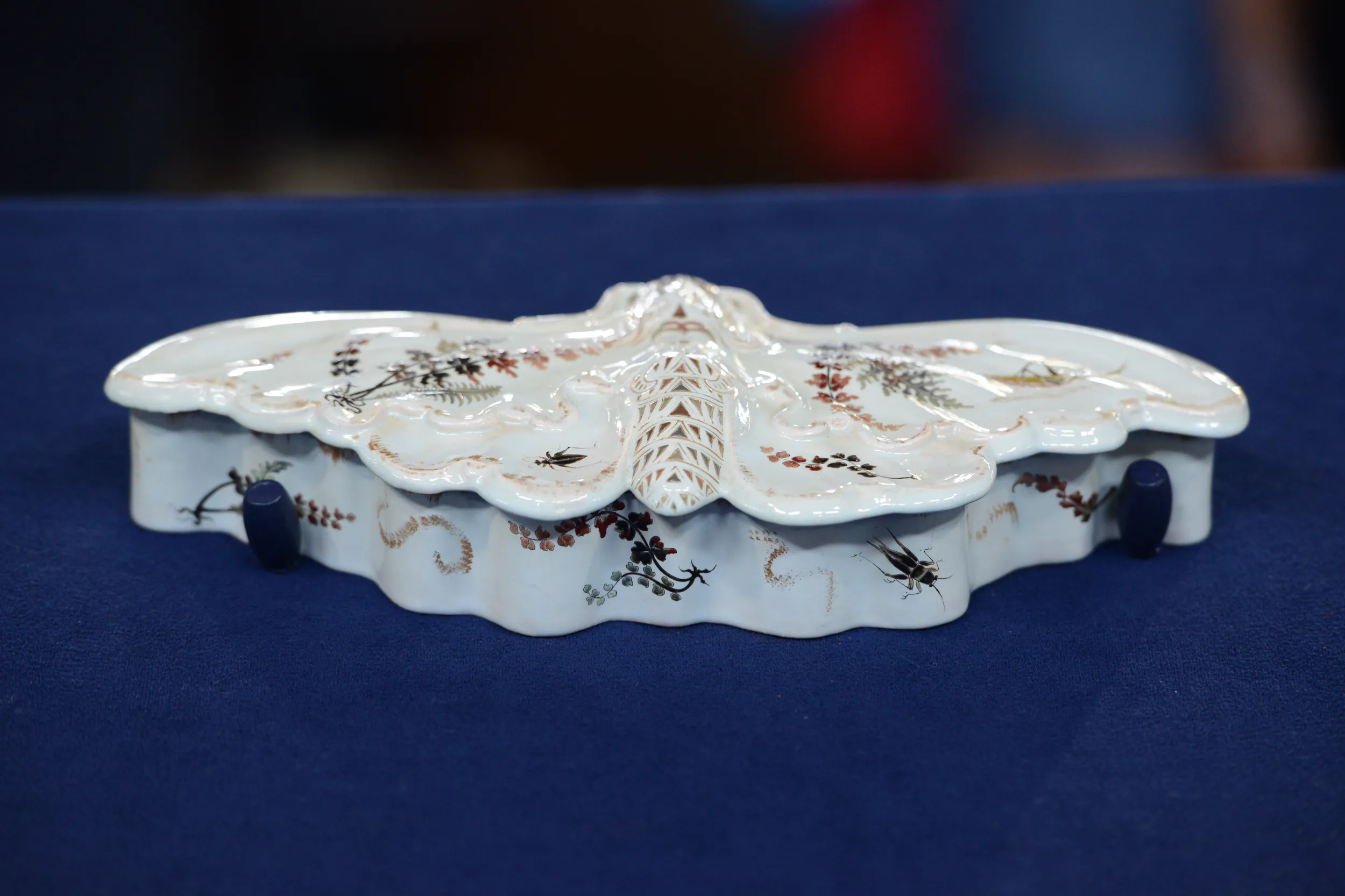GUEST: My husband's father was an antique dealer and he inherited it when he died. And so I have a lot of stuff, and I brought that along spur of the moment, because I don't know anything about it and I'm curious about it.
APPRAISER: Was he an antiques dealer here in Austin or was he...?
GUEST: In Galveston.
APPRAISER: In Galveston, okay. I'm going to start by taking the lid off.
GUEST: All right.
APPRAISER: And we can see underneath the lid, there's a mark here, and it says, "E. Gallé Fayencerie," and then it says "Nancy" underneath it. Fayencerie is another word for a particular type of pottery. And this is Émile Gallé, that's his mark. There's actually another mark here. It didn't take very well, but that's an impressed mark, also of Émile Gallé. Émile Gallé is best known as a glass maker working from the town of Nancy in eastern France. But in his early career, he also made ceramics. Other things, too-- he made furniture and such. His father was a potter and to a certain extent, he learned the ceramics business from him. And this is the kind of thing that Émile Gallé made through the 1880s and into the 1890s. And it's a beautiful object. It's what we call a dressing table box, designed to hold little pins and bits of jewelry and that sort of thing. It's more of a decorative object than anything else. And what I like about it is the shape of it. What would you call the shape?
GUEST: I call it butterfly, but I don't know.
APPRAISER: Well, it's actually a moth. And Gallé and his compatriots in Nancy and in general the French Art Nouveau designers, they loved moths and they loved ordinary things. And to me the moth is to the butterfly as the weed is to a flower, if you like. But they celebrated that. All of the design on the box, as is typical of Gallé, is local flora and fauna, including the moth that unquestionably he saw at night in Nancy. He painted these exquisite little insects here. There's a grasshopper. And these are really inspired by insects as depicted by Japanese artists that had a good deal of influence on Gallé at this point in his career. It's survived beautifully over the years.
GUEST: Is it glass or is it porcelain?
APPRAISER: It's not glass and it's not porcelain. It's made of faience. And faience is pottery with a tin glaze, this bluish-white glaze all over the top, a bit like icing on a cake. Okay. We've never seen one quite like it at auction, but I think if it came to auction, the lowest estimate would be $1,000 and the highest estimate would be perhaps $1,500.
GUEST: Very good





